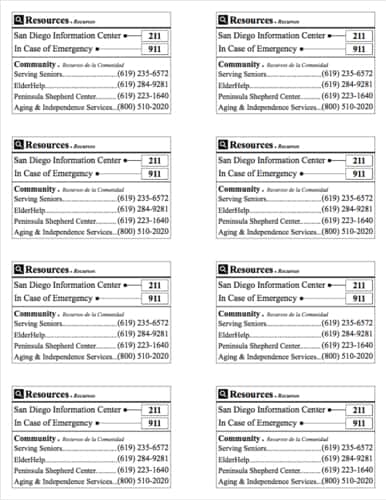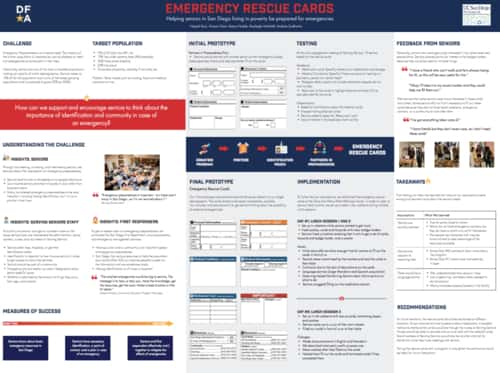Partners in Preparedness
Overview
No one is immune to emergencies, and seniors are historically one of the most vulnerable and fastest-growing populations in the US. Factors increasing their vulnerability also hinder traditional emergency preparedness activities.
We partnered with Serving Seniors, a local non-profit organization helping over 5,000 low-income seniors annually with basic needs, to prepare seniors for emergencies. Our final prototype was a set of wallet-sized emergency rescue cards containing useful information for both seniors and first responders.
work UX Researcher, Visual Designer
date_range Sep 2017 - June 2018
groups Nayeli Ruiz, Katya Noble, Kayleigh Mitchell, Andrea Suddartha
construction Affinity Designer
Deliverables keyboard_arrow_down
Understanding the User
We volunteered weekly and used surveys and interviews to immerse ourselves and connect with our users. During lunch, we served food and had casual conversations with seniors to discover more about them and help them open up to us.
Seniors
- Tend to stick to themselves or people they know well
- More concerned about day-to-day than long-term concerns
- Often do not have identification, or documents get stolen
- Mobility restricted by age, location, and burden
- Many have health complications and on prescriptions
Caretakers
Serving Seniors staff, ElderHelp
- Emergency drills exist, but aren't rehearsed often
- Without identification, clients unable to access many vital services provided by the community
First Responders
Firefighters, EMTs, UCSD Emergency Department
- Important to know a patient's medical information
- Having a community and plan is important for minimizing panic
Measures of Success
Based on these initial insights, we came up with endgoals to better envision the impact we were trying to create.

Seniors think about and have conversations about emergencies.
Seniors have necessary identification, a contact, and a plan in case of emergency.
Seniors and first responders cooperate more efficiently and mitigate the effects of emergencies.
Existing Solutions & Our Ideas
What solutions are out there, and why don't they work? We came up with a few ideas ourselves and compared their qualities with Pugh charts and affinity mapping.

Online Tips and Recommendations
- Need motivation and awareness to search for these resources.
- Low technology literacy in our users.
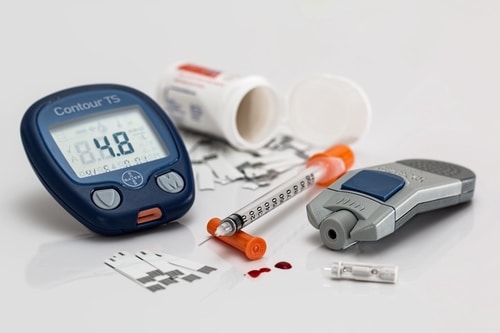
Medical Bracelets
- Not relevant to all seniors.
- Limited to medical conditions and emergencies.
- Lack information about local resources.

Vial of Life
Prepare medical information at home for emergency personnel.
- Low-income seniors do not have a stable home to keep it in.
- Doesn't address emergencies happening outside the home.

Emergency Buddies
Seniors partner up to fill out emergency cards and bond over crafts.
- Takes a lot of time
- Not everyone is social
- No way to make sure partners stay in contact
- Potential arthritis can get in the way of crafts
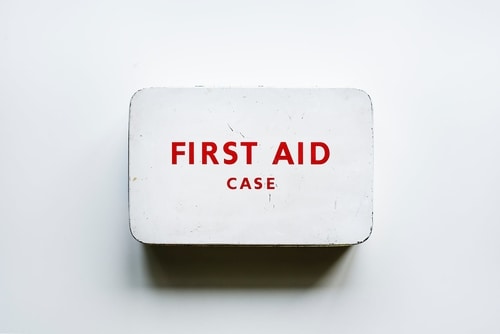
Grab & Go Kits
Create and distribute emergency preparedness kits.
- In previous attempts, recipients discarded the contents and simply used the bag
- Lack of funds
- Limited scalability
- Doesn't encourage thinking about possibility of future emergencies

Donation Program
People donate food and/or emergency preparedness items to Serving Seniors.
- Doesn't encourage thinking about possibility of future emergencies
- Takes a lot of time and effort for seniors and administration
- Intrusive
Prototype I: Emergency Buddies
We piloted a session of Emergency Buddies with 15 seniors at a Serving Seniors civic engagement meeting. Even though it had its drawbacks, we wanted to target the issue of isolation in seniors and assist first responders as well.
Premise
Seniors pair up with their new emergency contact to bond over bead keychains and fill out cards with medical information.
Pilot Results
Users suggested a few tweaks for our medical cards, such as adding sections for dosage, mental health, and unwanted medications. There was a lot of interest in the Resources card, but not much for the buddy activity.
Changes
We discarded the keychain activity, focusing instead on the medical cards to maximize our lasting impact.
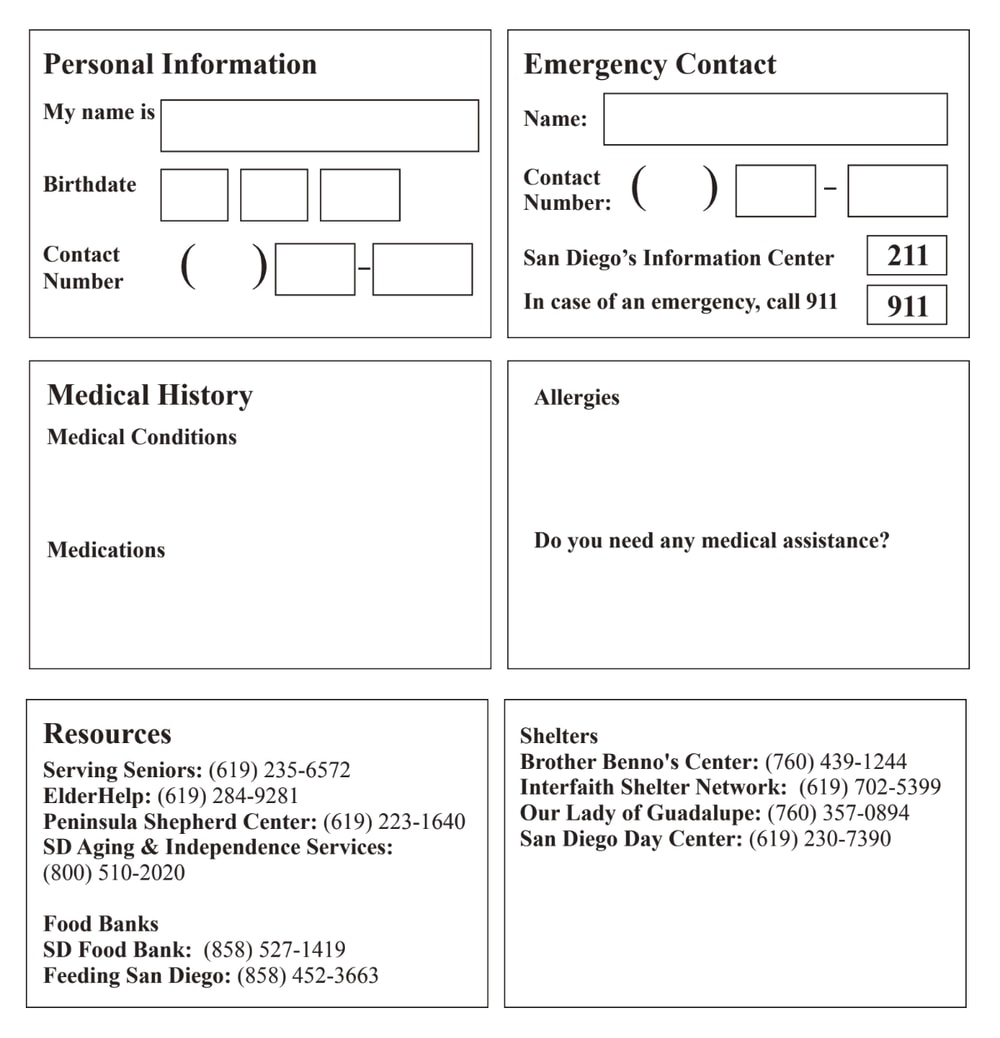
Prototype II: Rescue Cards
Our final Rescue cards targeted issues encountered in user research and feedback, as well as strengthening the parts that worked well. Along with the aforementioned sections, we added a Spanish translation and cleaned up the information hierarchy of our cards. We tried to maximize space, considering the budget of Serving Seniors and its clientele.

User Testing
We passed out our Rescue Cards in a local Serving Seniors center during lunch periods on two separate days, with cookies on hand as an incentive to fill out the cards.
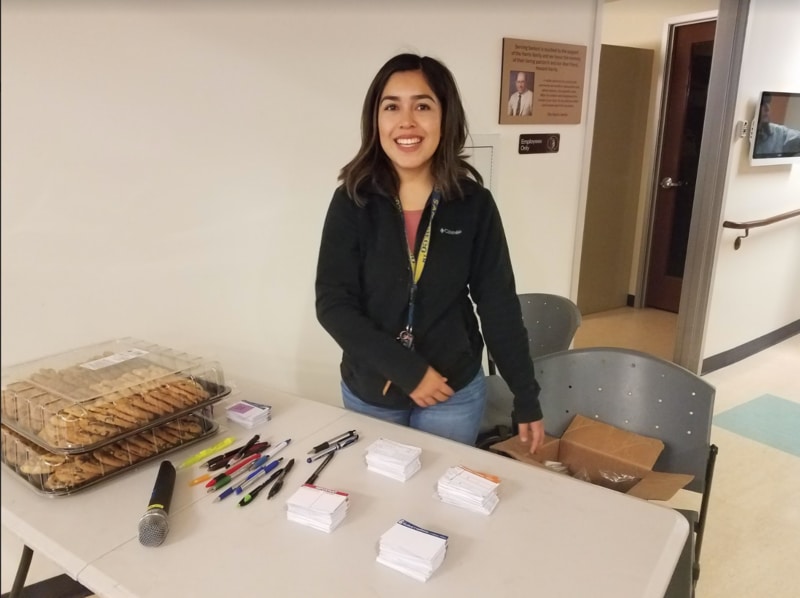
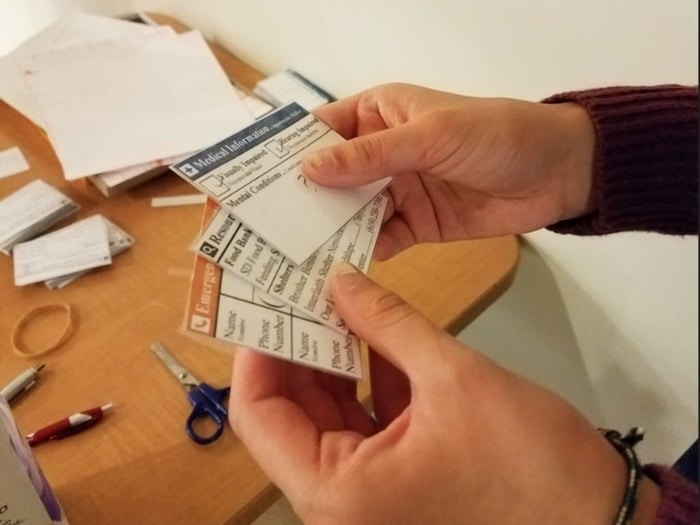
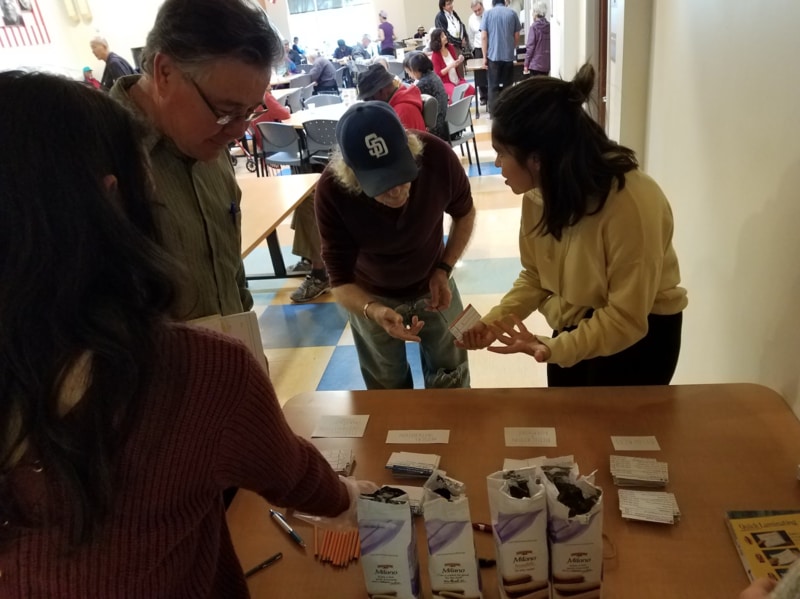
Day 1
Seniors lined up before receiving their official lunch to fill out cards and receive a cookie and clear badge holder at our booth.
However, our booth was too small to handle the lunch rush and cookie thieves. The line was slowed by people filling out cards at the table, translation issues (Spanish and Mandarin speakers), and a general confusion about what we were doing at Serving Seniors.
Day 2
This went a lot more smoothly now that we knew what to expect and had an action plan. We made announcements in both Mandarin and Spanish beforehand and directed people to fill out the cards at their own tables before receiving a cookie. We also helped fill out and laminate cards.
Though we had fewer seniors come to us, those who did came out of their own interest, rather than for just a cookie. Overall, we felt we had made a positive impact on the local community.
Takeaways
Overall, I conducted user interviews, surveys, and observations with seniors and relevant stakeholders. I also conducted affinity mapping and Pugh charting with the team, and created the Rescue Cards design.
I also learned that our initial assumptions don't always match up with reality. For example, many online articles mentioned the issue of social isolation in the elderly. However, after speaking with our users, we found that while several may not have emergency contacts, they do have a community within themselves.
